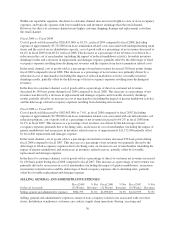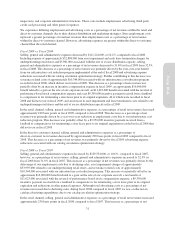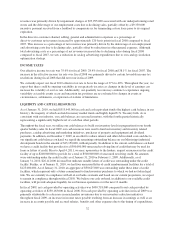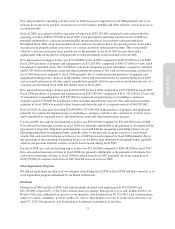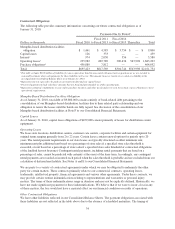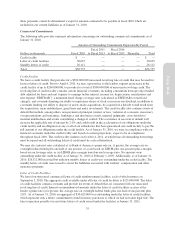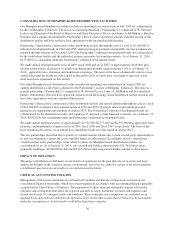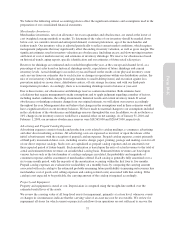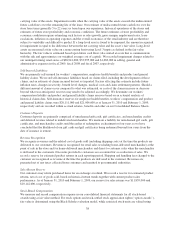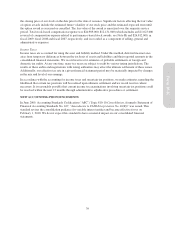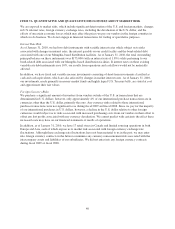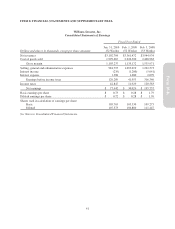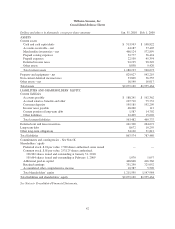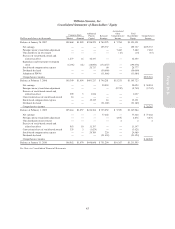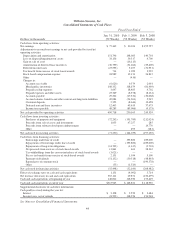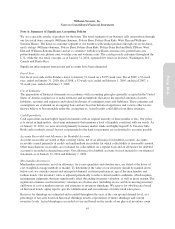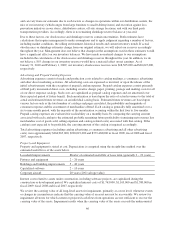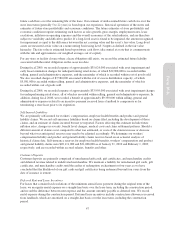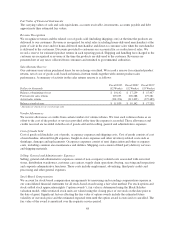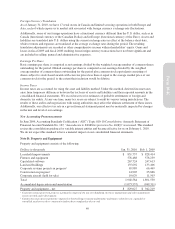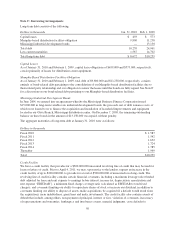Pottery Barn 2009 Annual Report Download - page 52
Download and view the complete annual report
Please find page 52 of the 2009 Pottery Barn annual report below. You can navigate through the pages in the report by either clicking on the pages listed below, or by using the keyword search tool below to find specific information within the annual report.ITEM 7A. QUANTITATIVE AND QUALITATIVE DISCLOSURES ABOUT MARKET RISK
We are exposed to market risks, which include significant deterioration of the U.S. and foreign markets, changes
in U.S. interest rates, foreign currency exchange rates, including the devaluation of the U.S. dollar, and the
effects of uncertain economic forces which may affect the prices we pay our vendors in the foreign countries in
which we do business. We do not engage in financial transactions for trading or speculative purposes.
Interest Rate Risk
As of January 31, 2010, we had two debt instruments with variable interest rates which subject us to risks
associated with changes in interest rates, the interest payable on our credit facility and the bond-related debt
associated with one of our Memphis-based distribution facilities. As of January 31, 2010, the total outstanding
principal balance on these instruments was $175,000 (with an interest rate of 1.8%) solely pertaining to our
bond-related debt associated with our Memphis-based distribution facilities. If interest rates on these existing
variable rate debt instruments rose 10%, our results from operations and cash flows would not be materially
affected.
In addition, we have fixed and variable income investments consisting of short-term investments classified as
cash and cash equivalents, which are also affected by changes in market interest rates. As of January 31, 2010,
our investments, made primarily in money market funds and highly liquid U.S. Treasury bills, are stated at cost
and approximate their fair values.
Foreign Currency Risks
We purchase a significant amount of inventory from vendors outside of the U.S. in transactions that are
denominated in U.S. dollars; however, only approximately 4% of our international purchase transactions are in
currencies other than the U.S. dollar, primarily the euro. Any currency risks related to these international
purchase transactions were not significant to us during fiscal 2009 and fiscal 2008. Since we pay for the majority
of our international purchases in U.S. dollars, however, a decline in the U.S. dollar relative to other foreign
currencies would subject us to risks associated with increased purchasing costs from our vendors in their effort to
offset any lost profits associated with any currency devaluation. We cannot predict with certainty the effect these
increased costs may have on our financial statements or results of operations.
In addition, as of January 31, 2010, we have 17 retail stores in Canada and limited sourcing operations in both
Europe and Asia, each of which expose us to market risk associated with foreign currency exchange rate
fluctuations. Although these exchange rate fluctuations have not been material to us in the past, we may enter
into foreign currency contracts in the future to minimize any currency remeasurement risk associated with the
intercompany assets and liabilities of our subsidiaries. We did not enter into any foreign currency contracts
during fiscal 2009 or fiscal 2008.
40


